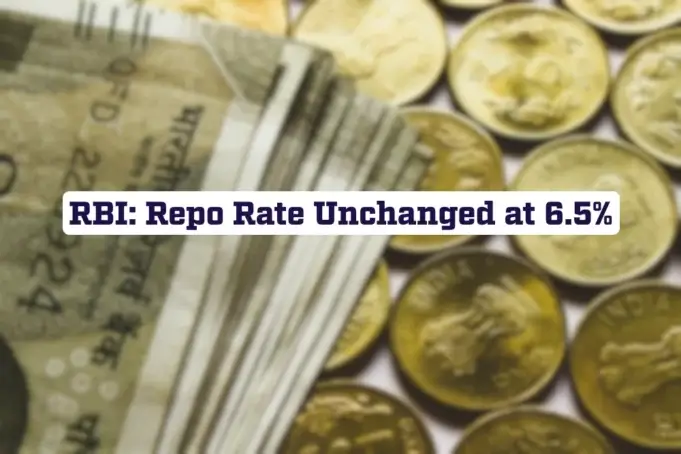At its meeting on December 8, 2023, the Monetary Policy Committee (MPC) decided to maintain the policy repo rate at 6.50 percent under the liquidity adjustment facility (LAF). Additionally, the standing deposit facility (SDF) rate remained unchanged at 6.25 percent, while the marginal standing facility (MSF) rate and the Bank Rate were held steady at 6.75 percent.
The MPC noted that the global economy was experiencing varying degrees of slowdown across different countries. Inflation, though receding, still lingered above the target, with underlying inflationary pressures showing resilience. Positive changes have occurred since the previous MPC meeting, including lower sovereign bond yields, a weaker US dollar, and stronger global equity markets. However, emerging market economies continued to grapple with volatile capital flows.
On the domestic front, the economy demonstrated resilience. In Q2-FY24, the real gross domestic product (GDP) grew by 7.6 percent year-on-year, bolstered by robust investment and government spending, which offset the impact of reduced external demand. The gross value added (GVA) in Q2-FY24 increased by 7.4 percent, driven by vibrant manufacturing and construction sectors.
The MPC also anticipated a brighter outlook for household consumption, supported by ongoing growth in manufacturing, construction, and gradual recovery in the rural sector. Healthy financial positions of banks and corporations, normalized supply chains, improved business sentiment, and increased capital expenditure from both public and private sectors were expected to boost investment. Exports were also anticipated to improve, alleviating some of the pressure from external demand. Nevertheless, geopolitical uncertainties, financial market volatility, and geopolitical fragmentation posed risks to the outlook.
Considering all these factors, the MPC projected real GDP growth of 7.0 percent for 2023-24, with Q3 at 6.5 percent and Q4 at 6.0 percent. For Q1-FY25, growth was forecasted at 6.7 percent, Q2 at 6.5 percent, and Q3 at 6.4 percent. The risks to this projection were considered evenly balanced.
The Reserve Bank of India (RBI) cautioned that uncertainties in food prices and unfavorable base effects might lead to an increase in headline inflation in November-December. The progress of Kharif harvest arrivals, Rabi sowing, and El Niño weather conditions needed monitoring, while crude oil prices remained volatile. Early results from RBI’s enterprise surveys indicated softer growth in input costs and selling prices for manufacturing firms in Q4 compared to the previous quarter. However, price pressures persisted for services and infrastructure firms. Taking these factors into account, CPI inflation was projected at 5.4 percent for 2023-24, with Q3 at 5.6 percent and Q4 at 5.2 percent. Assuming a normal monsoon in the following year, CPI inflation for Q1-FY25 was estimated at 5.2 percent, Q2 at 4.0 percent, and Q3 at 4.7 percent. The risks to this inflation projection were also evenly balanced.
The MPC recognized that recurring food price shocks were hindering the ongoing disinflation process. While core disinflation remained steady, indicating the impact of past monetary policy actions, headline inflation remained volatile, potentially affecting inflation expectations. The unpredictability of domestic food inflation, coupled with fluctuations in crude oil prices and financial markets in the uncertain global environment, posed risks to the inflation outlook. The MPC emphasized the need to sustain the disinflationary path.
Given that the cumulative policy repo rate hike was still filtering through the economy, the MPC chose to maintain the current policy repo rate at 6.50 percent during this meeting. However, they expressed readiness to implement appropriate and timely policy actions if the situation demanded. Monetary policy would continue to prioritize disinflation to anchor inflation expectations and facilitate full transmission. The MPC remained committed to aligning inflation with the target and focusing on withdrawing accommodation to gradually bring inflation in line while supporting economic growth.











